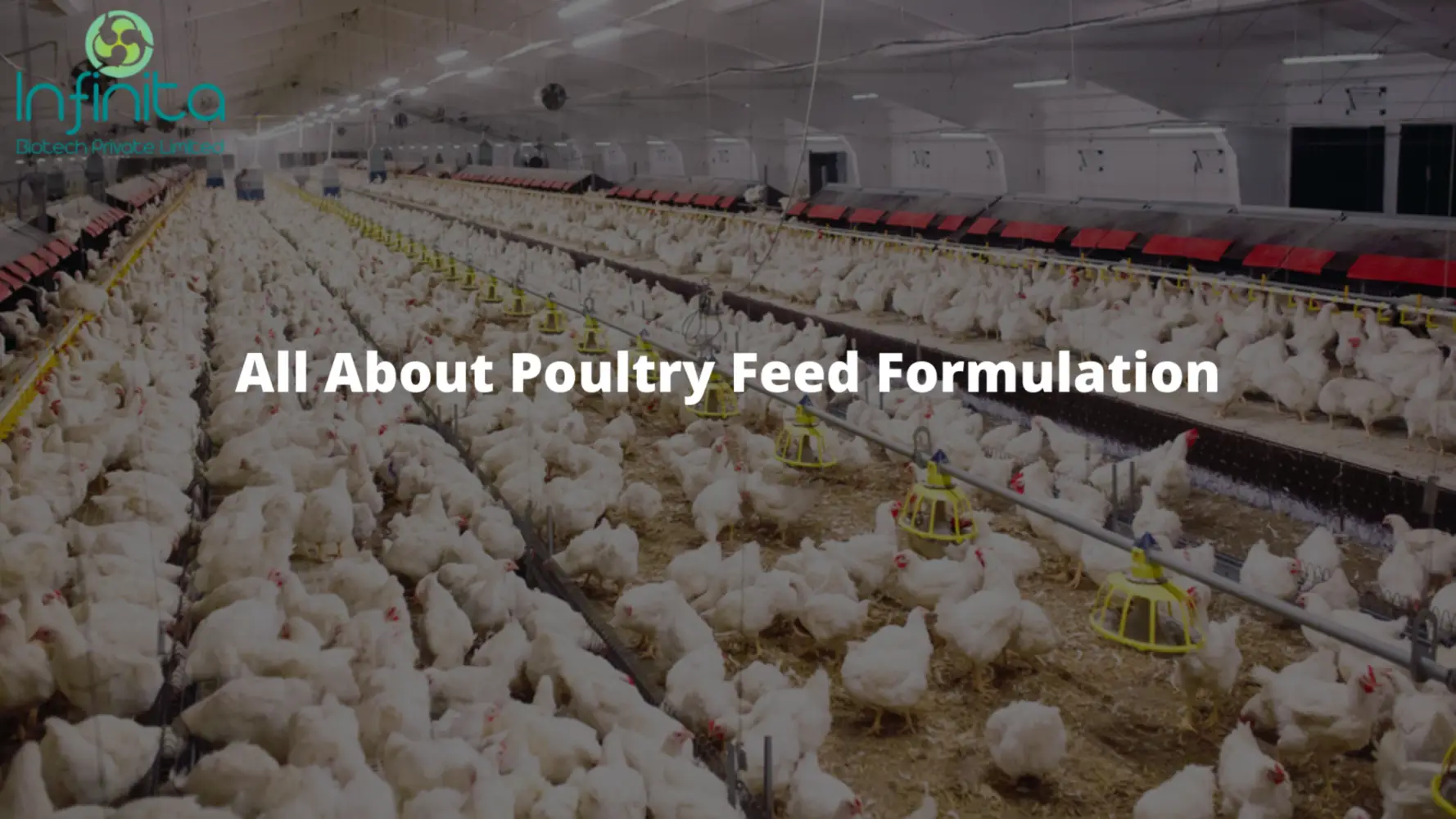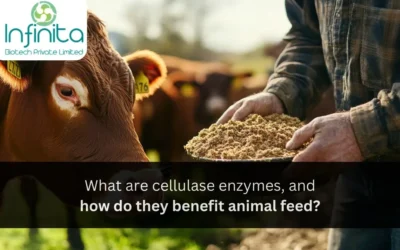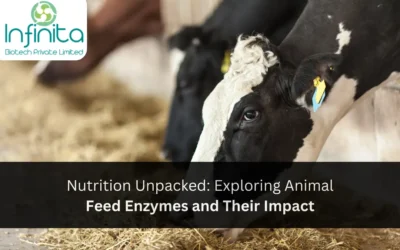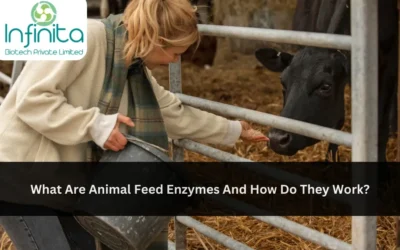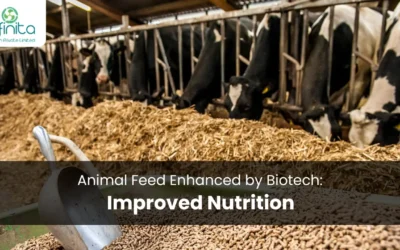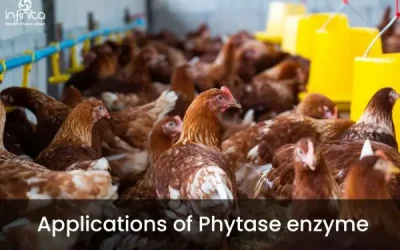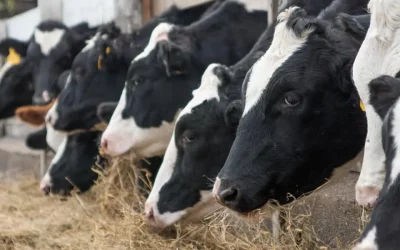Exogenous feed enzymes are added to the poultry feed to provide nutrition to poultry birds and improve their digestion. Poultry feed formulation takes up the lion’s share of a poultry business with up to 70% of the total operating costs. To lower the feed costs, certain grains and nutrients are included in it. But these have a high percentage of starch and non-starch polysaccharides (NSP). Poultry birds do not produce gut enzymes that can break down the fibre and NSP’s present in the feed. Therefore, exogenous enzymes are introduced into their feed for good digestion and obtaining other benefits.
Adverse Effects of NSP Compounds on Poultry Growth
Gut enzymes of poultry are unable to digest NSP compounds in the feed. Therefore, they are not able to absorb the proper nutrients from their feed intake. They have to be fed more for nutrient absorption and growth. This also leads to the alteration of the microbial flora in the birds gut and leads to gut congestion and blockage of the excretory passage tract. It leads to malnutrition and lowers the quality of end products i.e. eggs or poultry utilized for human consumption.
How Enzymes Help with Poultry Feed
Enzymes are biocatalysts made of proteins, minerals and vitamins. They affect the rate of biochemical reactions without undergoing any change themselves. Enzymes work on a substrate and break it down into smaller parts. Enzymes work on the individual ingredients by breaking them down into smaller parts that can be easily digested by the birds. Identification of the ingredients or substrates, in this case, is necessary so that the correct enzymes can be used on them to get the optimum result.
Types of Enzymes Available for Poultry Feed Formulation
The common enzymes which are included in poultry feeds include phytases, proteases and lipases. Other enzymes used for poultry feed contain carbohydrases which include xylanases, amylases and beta-glucanase enzymes. These enzymes improve the digestibility factor of starch and grains like rye, wheat, barley, soybean etc. Phytases also make bird droppings rich in phosphate which can be used as an organic fertilizer.
Roles of Enzymes in Poultry Feed – converting feed to nutrition
Enzymes are used in poultry feed formulation to break down the cell wall of grains, and also work on fibres, starch and plant proteins to make the feed easily digestible by the poultry. These also help in the proliferation of beneficial gut bacteria in poultry. Let us look at how different enzymes work on poultry feed.
1. Xylanase
Xylanase breaks down NSP that include soluble and insoluble arabinoxylans present in cell walls thus improving poultry digestion and helping absorb nutrients and improving feed passage rates.
2. Βeta-Mannanase
β-Mannanase breaks down β-Mannan. β-Mannan is an anti-nutritive fibre that is present in poultry feed containing soybean meal. The poultry gut treats it as an invading pathogen and triggers an immune response. By breaking down β-Mannan, the enzyme Βeta-Mannanase prevents the immune response and conserves energy and protein resources of the poultry that ultimately lead to improved growth and feed efficiency.
3. Alpha Galactosidase
Poultry feed formulations containing high soybean meals have nearly 40% indigestible carbohydrates. It increases gut viscosity that causes loose bird droppings and wet floors. Alpha Galactosidase works by breaking down the soluble fibre and carbohydrates and thus making the feed more digestible by the poultry. This reduces the gut viscosity and thus reduces the loose droppings and instances of wet littered floors. It also reduces production costs as poultry gets high nutrition from the feed.
4. Amylase
Amylase works on starches and hydrolyzes their 1,4 glucosidic linkages which increase its digestibility factor. It works in tandem with the gut amylase enzymes produced by the poultry thus absorbing nutrients for growth. Increased digestion of starch leads to the reduction of glucose presence, hence reducing the growth of non-beneficial bacteria in the gut & intestinal tract of the poultry.
5. Protease
Proteases break down peptide bonds between amino acids. They hydrolyze storage and structural proteins and increase their digestibility. They also disrupt the harmful interaction of the protein with fibre and starch in poultry feed. Proteases like trypsin and pepsin also break down residual trypsin inhibitors, lectins and other vegetable proteins in soybean meals that inhibit nutrition and thus improve digestibility and absorption.
6. Lipases
Lipases hydrolyze fat present in the feed and thus increase its digestibility.
7. Phytase
The absorption of phosphorous is essential for bone growth in poultry. Poultry feed formulations contain phosphorus bound into phytates. But poultry does not produce phytase by itself. Therefore, phytase enzymes are added to the feed to break down phytate molecules and release phosphorus for consumption.
8. Pectinase
Pectinase work by breaking the indigestible pectin leading to increased nutrition and reduction in digestive viscosity.
9. β-glucanase
β-glucanase works by breaking down glucan based fibres by cleaving glucosidic linkages. This leads to better absorption of the nutrients.
10. Cocktail of Amylase, Xylanase, and Protease
This cocktail of enzymes is introduced by poultry feed manufacturers into their feed. This leads to improvement in nutrient utilization leading to better bird growth and overall performance. These enzymes are mostly sourced from bacteria that also help in improving the gut microbial fauna of the poultry.
Conclusion
The addition of enzymes in poultry feed formulation enhances the availability of nutrients to the birds leading to better bird growth and better quality of end products for consumption.
